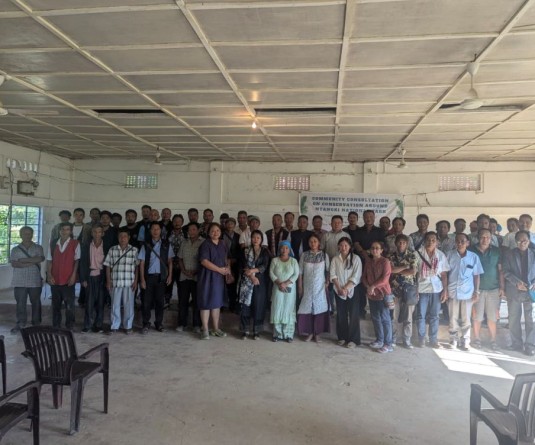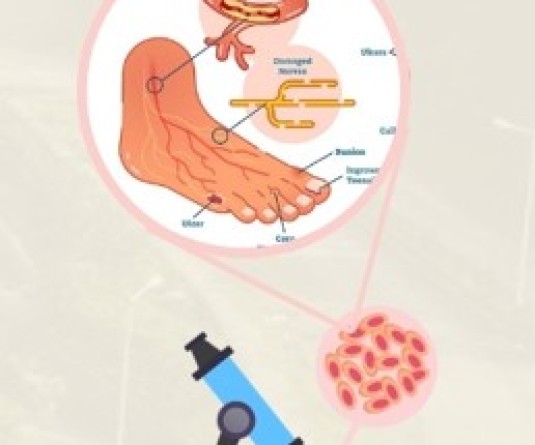In this file photo, residents are seen lining up to collect water from a water supply vehicle.
.jpg)
Urgent need to develop locally relevant systems and policies
Our Correspondent
Kohima | August 24
Nagaland Sustainable Development Goals (SDGs) Vision 2030 in its Goal-6 on ‘Clean Water and Sanitation’ aims to ensure availability and sustainable management of water and sanitation for all. Its vision is to provide safe, adequate and sustainable drinking water supply and environmental hygiene for all to improve the quality of life.
The vision document listed scarcity of surface water sources, land ownership systems and fund constraints as some of the main challenges a number of challenges impacting its goals for clean water and sanitation for all.
Stating that surface water sources are scarce in the plain sectors and foothills of the state, the document stated that most of the water supply schemes are ground-water based. Water quality is an issue for such sources which need special treatment to make water potable and moreover, the yield from ground source is not adequate and sustainable in the long run, it said.
The document also underscored that the unique system of landholding ownership by an individual, family or clan in the state often hinders and delays developmental activities particularly drinking water supply schemes.
Along with this, it said that most villages in Nagaland are located at hilltops while the water source is located below or at lower altitude. “This necessitates schemes to bring water from distant sources through long water transmission pipelines (Steel pipes) to withstand the high pressure. Such water supply schemes have very high per capita cost even as the available fund is inadequate, it added.
Strategies for success
In this context, the vision document stated that tackling shortage of drinking water and to tackle the shortage of drinking water due to lack of dependable water sources, rainwater harvesting, water conservation and catchment area conservation can be leveraged under the National Water Conservation plan of Jal Shakti Ministry and MGNREGA scheme.
Noting that Nagaland receives considerable rainfall during the monsoon, it emphasized on rainwater harvesting and mulled policies that make rooftop rainwater harvesting compulsory for future building projects. “It is essential that the rainwater is harvested and put to efficient use. Building and maintaining recharge pits, tube wells, trenches and recharge wells in urban areas as well as building check dams and contour bunds can affectively capture rainwater. For new and future building constructions, the respective district administration could make rooftop rainwater harvesting compulsory,” it stated.
The document also emphasized that participatory ground water management can go a long way to conserve water resources in the state like Nagaland which is constantly faced with drinking water shortage.
Apart from this, the document highlighted how MGNREGA programme can used to address inequitable water distribution issues. While leveraging the programme to build effective water catchment structures that can help to effectively capture water, this scheme can also be useful to regenerate traditional water management and conservation systems, enable water committees to fix non-democratic, non-consultative decision-making process and address the issue of inequitable water distribution, it added.
Formulation of state policies
The vision statement stated that there is a need to formulate Nagaland state-specific guidelines, policies and Acts in order to address local challenges and to expedite the process of connecting water supply to all households.
The Centre’s guidelines and policies with regard to water supply or may not be fully applicable or appropriate in the local context and challenges that Nagaland faces with its unique land ownership pattern and terrain, it stated while underscoring the urgent need to develop locally relevant systems and policies that will allow smoother implementation of programmes.
Information, education & communication campaign
The need to focus on creation of awareness among communities on various aspects of drinking water and sanitation through platforms such as seminars, workshops, banner/slogan campaigns, TV, Radio etc. was also highlighted in the vision document.
It said that the district administration can play a key role in encouraging the village level action and leaders of villages can take forward the Water, Sanitation and Hygiene (WASH) message across the villages.
Similarly, schools, colleges, and universities can effectively spread Information, education and communication (IEC) campaigns and citizen-led campaigns in partnership with non-profit organizations can work well to help raise awareness and sensitization on WASH, it asserted.
Expand hydrologic and information systems
On the part of the government machinery, it said that the state Department of Water Resources envisions developing proper support systems for collection and storage of data through the creation of Water Resources Information System (WRIS) followed by studies to alleviate various water related problems.
The expectation is that knowledge, open access and stronger institutional capacity will contribute to a shift towards integrated water resources management at the basin scale. The resulting improved water management of drought and flood risks are expected to bring substantial economic-benefit, it added.
The vision statement also stated that it aims to substantially increase water use efficiency across all sectors, ensure sustainable withdrawals and supply of freshwater, and substantially reduce the number of people suffering from water scarcity.
Irrigation for intensive agriculture
In order to provide assured irrigation for intensive agriculture through surface irrigation and ground water irrigation, it said that five strategies will be adopted by the Department of Water Resources.
The strategies include introduction of water tariff for irrigation; adoption of volumetric basis for crop water management through introduction of appropriate crop planning and predetermine rotation irrigation system; restoration of water bodies for multipurpose usage including ground water recharge; development of ground water in conjunction with surface irrigation for providing assured irrigation for intensive agriculture, and tapping available water resources through all the perennial streams in the state for agricultural production through integrated planning in infrastructure development such as dams, reservoirs and diversion weirs.
2030 targets for Clean Water and Sanitation
• Achieve 100 per cent universal and equitable access to safe and sustainable drinking water
• Achieve 70 per cent of the irrigated command area brought under Water Users Association
• Protect and restore water-related eco-systems, including mountains, forests, wetlands, rivers, aquifers and lakes by 50 per cent





